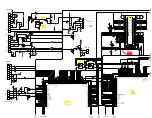
If your word processing program allows inserted codes, it will
probably do standard printing without such codes. It is only for
special features that you will need to use inserted codes. For
example, if you want to have headings in wide bold printing
(called double-width emphasized), you would probably have to
use inserted codes. For the program we mentioned above you
would type Control-V, then the code for double-width empha-
sized, Control-V again, and then the text of the heading. The
codes for double-width emphasized are in Chapter 6 and
Appendix C.
Again, if this sounds terribly complicated, don’t worry. Use your
LX-86 with the standard features of your word processing program
until you become more familiar with both of them. Then you can
decide whether or not you need or want to learn to use inserted
codes.
See your software documentation for further information.
Programming Languages
If neither of the methods described above seems appropriate for
your application, you can write a program in BASIC or any other
programming language to send control codes to your printer. In the
chapter on page formatting you will find examples of such programs.
Just remember that with this method your printer control code stays
in effect for the whole document you print. This method is good for
setting margins, for example, but does not work for italicizing a word.
Now you have some background on how printers work and how
software can communicate with them. Turn to the next chapters to
learn about the specific features of your LX-86 printer.
31
Summary of Contents for LX-86
Page 1: ...EPSON LX 86 TM PRINTER User s Manual ...
Page 30: ......
















































